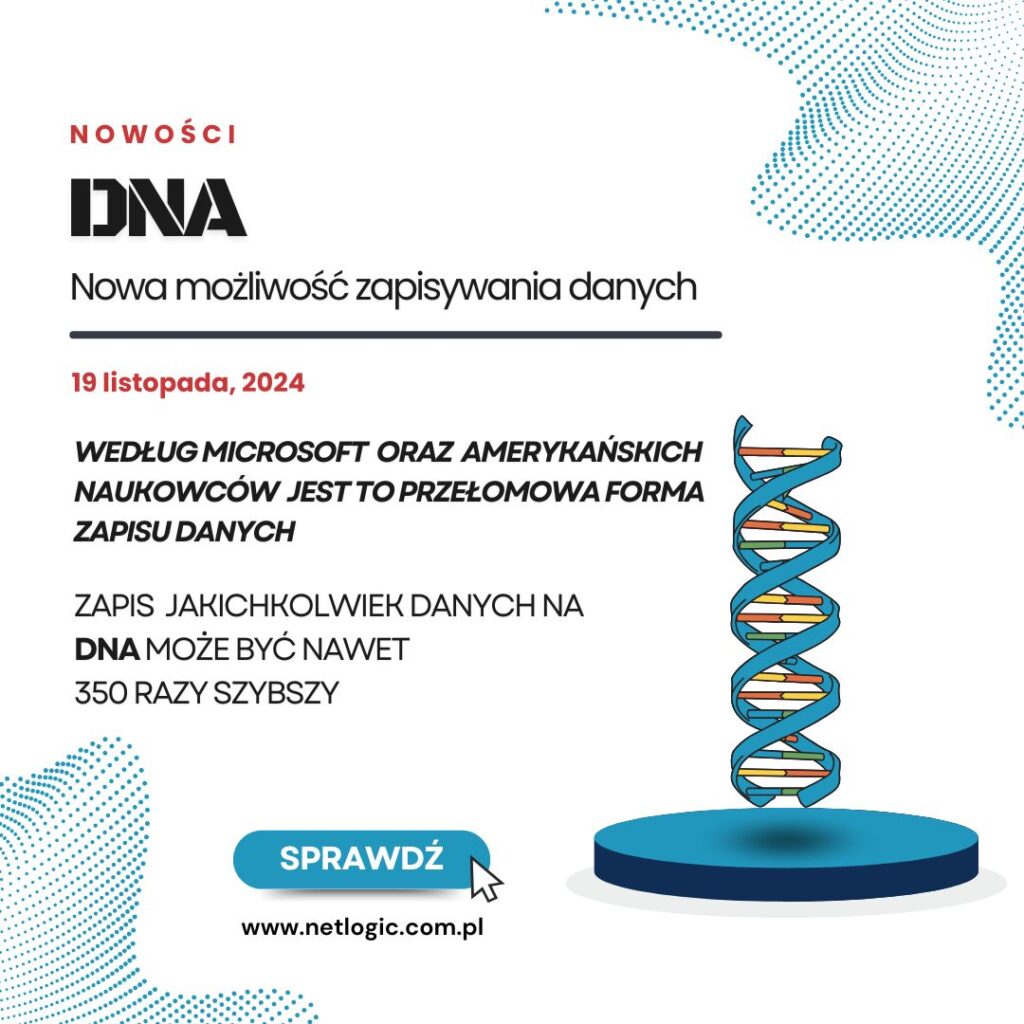Imagine a data carrier that houses entire libraries in the volume of rice grains, will survive the millennium and does not require storage energy. It's not science fiction - it's DNA! Scientists around the world are working on technology that changes biological codes of life into the digital archives of the future. The DNA record is a revolution that combines nature and technology in a completely new way. Are you ready for such a future?
In the face of the growing needs related to storing huge amounts of data, scientists are looking for alternative solutions that go beyond traditional technologies, such as a pendrive or "cloud". One of the most promising directions is the use of DNA as a medium for recording data, because thanks to its high information density and durability, it may be revolutionized in the future. Now accelerate 350 times, thus confirming the belief that in the near future it will be the best solution.

Source: https://www.nature.com/articles/s41586-024-08040-5
The Long Qiana team from the Beijing University has developed a way to significantly accelerate the data coding process in DNA, achieving hundreds of times greater efficiency. The inspiration was to restore natural biological mechanisms that regulate gene expression, which enabled faster and more precise recording of information. The development of this method can close the technology to wide, practical applications. Scientists have achieved impressive progress, encoding huge amounts of data, including images, at a speed of hundreds of times greater than previously possible. This breakthrough significantly accelerates the process and makes it more effective, opening new possibilities in the field of information storage.
How did they do this?
The team has transformed long DNA bands into binary code, sequence of ones and zeros, which is used in data storage computers. They started with prefabricated DNA templates, which served as a base for which shorter DNA strands added, just like beads on a string. Then they used a chemical reaction to add a methyl group (CH3), which is a molecule made of coal and hydrogen, to some of these "beads".
Metilated "beads" become one binary code, and non -methylated serve as zero. In natural conditions, cells use the same methylation process to modify DNA without changing the basic sequence, which allows them to stable additional storage of additional layers of regulatory information.
Qian and its colleagues have developed a way of performing this process many times at a given moment, in parallel, adding a special "bar code" to each template. This allowed to save 350 information units at the same time, i.e. bits, on a DNA sample - hundreds of times more than the previous standard, which consisted of writing only one bit at once.
Fun fact
As test images, scientists wrote the image of Panda and the image of a tiger from ancient China, and then recovered them using a DNA sequencer supported by an error correction algorithm. The recovered images have been recreated with an accuracy of 97 percent or larger.
DNA data recording is a technology of the future that can revolutionize the method of storing information. It offers extraordinary density and durability, but still requires significant improvements in terms of costs, speed and reliability. If these challenges are overcome, DNA may become a key data medium in the information era.
We also invite you to SM 🙂